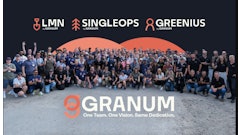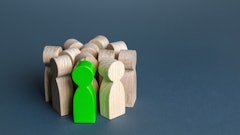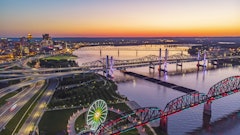
The landscape industry, including lawn care, landscape maintenance, design/build, tree care, and irrigation and water management, takes employee and client safety and health very seriously, employing regular safety training and enforcing strong safety standards on the job.
It remains critical for business owners to maintain that safety protocol during the COVID-19 pandemic.
“We're in a time of crisis in our, in our industry,” said Fred Haskett of The Harvest Group Landscape Business Consulting during a recent webinar. “I think we all should be thankful that we're able to work and provide our essential services. We want to continue working during this time, we want to follow the rules set out for us.”
Haskett pointed out that it’s important to remember that there are many people who are working from home now and they're staying at home, so all eyes will be on the landscapers when they are doing their essential services.
“Make sure you're protecting yourselves your employees and maintain that privilege of being able to work outside,” he said.
The National Association of Landscape Professionals safety advisor Sam Steel recently offered some best practices and safety measures, in conjunction with some suggested guidelines, for those still in business in the midst of the pandemic.
“Obviously, this is new uncharted territory that we're dealing with every 10 minutes it's seems like or at least every hour things are changing,” he said, noting that businesses will have to determine whether specific recommendations make sense for them.
Employee Protocol
COVID-19 is spread from person-to-person, through respiratory droplets produced when an infected person coughs or sneezes.
The virus is also believed to spread by people touching a contaminated surface or object and then touching one’s mouth, nose, or possibly the eyes.
Employers and workers should follow these general practices recommended by the Centers for Disease
His first round of suggestions is recommendations for employees as far as intervention is concerned.
Things employees should DO include:
- Stay home when you are not feeling well.
- Wash your hands more often than normal with warm water and hand soap. “There's a neat little formula here that I call ‘two-by-two.’ Wash your hands, two times more often than you normally would and also use the wash twice as long as you normally would. I think that's a good recommendation for employees if they have access to the hand washing stations," Steel said.
- Implement social distance (staying at least 6-feet apart)
- Encourage respiratory etiquette, including covering coughs and sneezes, and avoid touching your eyes, nose, or mouth with unwashed hands.
- Use hand sanitizer gels or wipes. “When and where available and hopefully these could also be made available inside vehicles that are used to get employees to and from the job sites,” he added.
- Wear cleaned and properly stored personal protective equipment (PPE)
- Keep respirators clean with warm water and dish detergent after each use.
- Discard nuisance masks that are dirty, damaged or contaminated.
- Keep the masks and respirators in sealed containers clearly indicating who the user of that PPE is.
- Use a respirator that is designed for the work activity you are taking on.
- Wash your hands and exposed skin before leaving work before the end of the day before leaving work. “You do not want to be carrying COVID-19 home to the family,” Steel noted.
Also, he said sales, office or support staff should establish internal policies and practices including teleworking or staggered shifts to reduce the number of employees at a facility at one time.
“All employees who are not required to be on customer sites performing landscape or those employees assigned to the critical and continued operation of the business entity should be considered for working remotely,” he said.
These are the things Steel said employees should NOT be doing:
- Sharing nuisance masks, respirators or other PPE equipment such as ear muffs, or gloves.
- Use a nuisance mask or respirator that is dirty or contaminated or been stored in a potentially dirty environment. “In other words don’t use a respirator that’s been throw inside the transport vehicle to and from the job and could be picking up the COVID-19 form hard surfaces within the vehicle,” Steel added.
- Use a respirator that has not been tested or fitted to the wearer.
- Use a respirator that is not intended for the assigned work activity.
Planning Ahead
For the employers, Steel said they should have communicated a prepared a general procedure and respiratory program related to COVID-19.
“Make sure it's written so that it's available and shared with all of the employees about what you're doing in terms of your respiratory program with policies and procedures and it becomes part of your health hazard communications program,” he said.
Secondly, he suggests designation of a company contact person responsible for the respiratory programs. “Somebody within the organization who you've designated as keeping track of PPE that's available and keeping track of all of the cleaning and disinfecting and things that need to be done,” he said, citing checking with crew managers and make sure that those types of activities are being done.
Recognizing the current shortage, Steel said it is still important to provide an adequate inventory of respiratory protection devices. “Hopefully you have a supply or a vendor who gets these things to you on a regular basis so there's no interruption in that process,” he said.
In addition to masks, employers are encouraged to provide single use towels and sanitizers at workstations.
“I think the important part about that one is those single use towels,” Steel said. “You don't want individual employees using the same towelettes or towels to do the cleaning and the disinfecting. They should be using single use towels when they wash their hands.”
Also, he suggested employers conduct and document frequent safety training for staff via teleconferencing.
“Be sure the documentation is done so even if the crew manager is out there and reminding the employees about COVID-19 how easily it's transmitted among different individuals, make sure you document even a briefing that the crew manager does in the morning before everybody starts work, and obviously document with the employees who have been trained the topic of the training, the day of the training and who did the training,” Steel said.
Lastly, for contractors he stressed the importance of developing and implementing less risky crew transportation methods.
“This is something that you may not be able to do but there are a few things you could do,” Steel said.
The general recommendation relating to social distancing has been a six-foot space. Many companies would not be able to limit the occupants in a crew cab situation.
However, to accommodate those scenarios, Steel suggested ensuring there was good ventilation within the vehicle.
Also, he said crews should keep hard surfaces in the vehicle sanitized frequently. Depending in the source, it has been reported that COVID-19 can survive on hard surfaces from anywhere from two to eight days, therefore sanitizing vehicles and office spaces is vital to stopping the spread of the virus.
In general, field teams should include the least number of employees that can safely carry out work at a site, and crew members should drive separately to the site whenever possible. Only the driver should be allowed to touch the controls anywhere in the vehicle.
Client Protocols
Steel suggested that contact with clients should be limited to email, phone calls or video teleconference, when possible, and if personal contact is required, then maintain social distancing of 6’ when on the property with the client or their customers or the general public. I
If in-person contact is required, then maintain social distancing of 6 feet at the client’s or customer’s property, or when communicating with the general public.
Also, he encouraged contractors to communicate with clients about the current status of allowable work in their state or locality and explain the essential nature of landscape services and detail any operational changes due to COVID-19.

![Doosan Bobcat Wacker Neuson Stack 2ec Js Pb V6e[1]](https://img.greenindustrypros.com/mindful/acbm/workspaces/default/uploads/2025/12/doosan-bobcat-wacker-neuson-stack2ecjspbv6e1.CPyyz8ubHn.png?auto=format%2Ccompress&bg=fff&fill-color=fff&fit=fill&h=100&q=70&w=100)



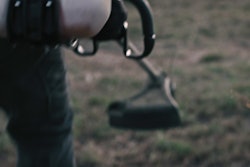
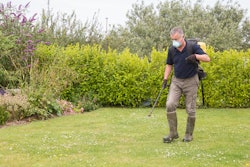

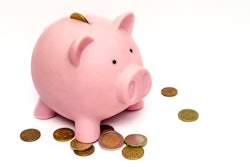
![Doosan Bobcat Wacker Neuson Stack 2ec Js Pb V6e[1]](https://img.greenindustrypros.com/mindful/acbm/workspaces/default/uploads/2025/12/doosan-bobcat-wacker-neuson-stack2ecjspbv6e1.CPyyz8ubHn.png?ar=16%3A9&auto=format%2Ccompress&bg=fff&fill-color=fff&fit=fill&h=135&q=70&w=240)






